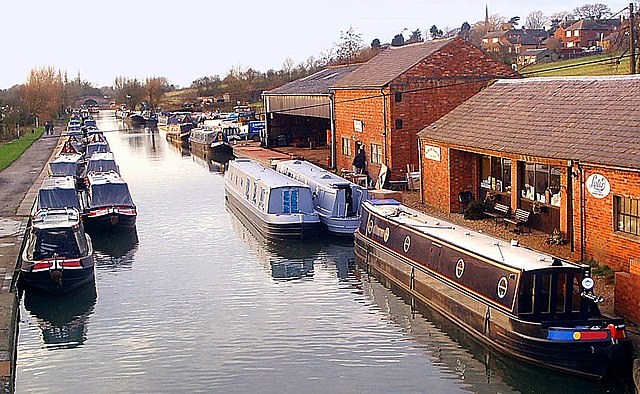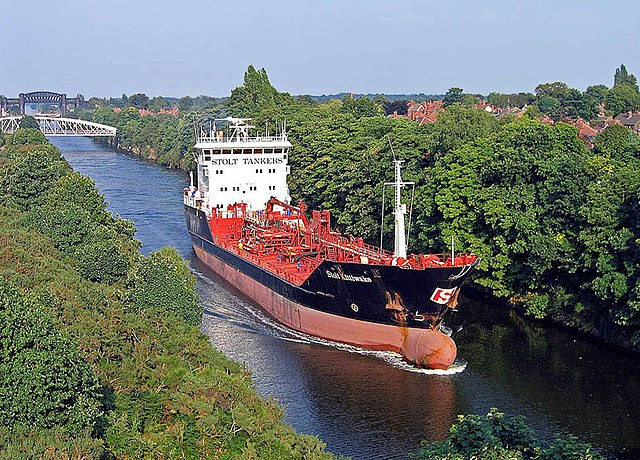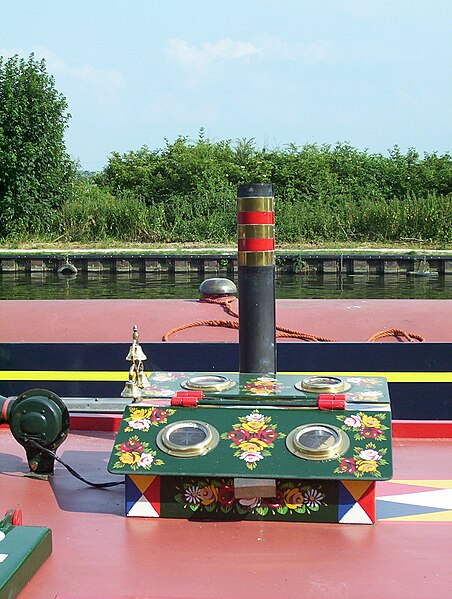The Grand Union Canal in England is part of the British canal system. It is the principal navigable waterway between London and the Midlands. Starting in London, one arm runs to Leicester and another ends in Birmingham, with the latter stretching for 137 miles (220 km) with 166 locks from London. The Birmingham line has a number of short branches to places including Slough, Aylesbury, Wendover, and Northampton. The Leicester line has two short arms of its own, to Market Harborough and Welford.
The canal at Braunston
The Grand Union Canal passing Trellick Tower at Westbourne Park, London
The Grand Union Canal near Westbourne Park, London
The Thames Lock on the Grand Union Canal, Brentford, West London. Photo taken in twilight at the peak of a spring tide
Canals of the United Kingdom
The canals of the United Kingdom are a major part of the network of inland waterways in the United Kingdom. They have a varied history, from use for irrigation and transport, through becoming the focus of the Industrial Revolution, to today's role of recreational boating. Despite a period of abandonment, today the canal system in the United Kingdom is again increasing in use, with abandoned and derelict canals being reopened, and the construction of some new routes. Canals in England and Wales are maintained by navigation authorities. The biggest navigation authorities are the Canal & River Trust and the Environment Agency, but other canals are managed by companies, local authorities or charitable trusts.
Traditional working canal boats
The Manchester Ship Canal can accommodate ships with a length of up to 600 feet (183 m).
'...gleaming brass and gaily-painted metalware....' Saul, Gloucestershire
The Oxford Canal near Rugby








